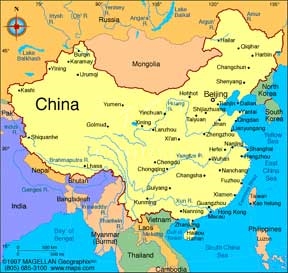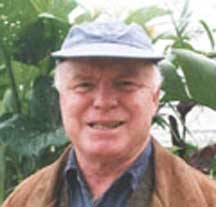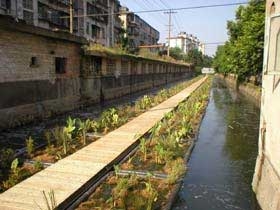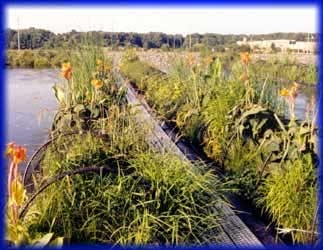 |
| Map of China Photo from www.maps.com |
In Fuzhou, a bustling, crowded city of 2.5 million in southeast China, an elaborate network of canals runs through the urban center. The water they carry is grey and lifeless, laden with raw sewage and all manner of garbage. The stench, according to ecological designer John Todd, is beyond reason.
But a miraculous thing is happening on a tiny portion of Fuzhou’s 100 miles of canals. A floating ecological living machine—a gorgeous botanical garden—is restoring the water to health.
Last autumn, Todd’s nonprofit company, Ocean Arks International, installed the system, called Restorer, on 600 meters of canal that border high-rise apartment buildings, restaurants, shops, a temple, and a school. This section of canal has 40 influent points bringing in waste from 12,000 people. After just one year of operation, the water beside the Restorer is clear, no longer stinks, and contains abundant fish. Neighbors report seeing butterflies and birds there for the first time in their lifetimes, says Ocean Arks operations manager Mike Carr.
 |
| Dr. John Todd Photo courtesy of Ocean Arks International |
The canal is also meeting the technical standards Fuzhou officials set. Biochemical oxygen demand (BOD), a measurement of the strength of the waste, has dropped tenfold from a suffocating 150 to a pretty clean 15 on most days. Ammonia levels are down to 10 to 15 parts per million from around 80 parts per million. Dissolved oxygen, which is necessary to support life, has increased to a healthy six parts per thousand (ppt) from between 0.3 and 0.5 ppt.
Like other “living machines” designed by Ocean Arks, the Restorer puts together elements from three different water ecologies—say, a marsh, a pond, and a stream—to restore the ecosystem to health. Todd and his colleagues don’t try to analyze everything the living machines are doing, because the systems are so complex; they’ve just noticed the combinations work. “It’s a self-designing, self-organizing system,” says Todd. “The linking of different ecologies creates a kind of meta-intelligence that allows you to do what was previously considered impossible.”
 |
| Restorers are "floating islands" installed in waterways to treat waste and clean polluted waters. Photo courtesy of Ocean Arks International |
Doing the impossible in Fuzhou canal’s Restorer are 100,000 plants, 10,000 koi carp fish, and two strains of bacteria. The plant roots house the bacteria. The fish and one of the strains of bacteria consume the sewage solids. The other strain converts the ammonia into a more benign form.
The plants grow on two long racks with a walkway between to allow workers to access a central control barge, keep the water garden from growing out of control, and pick up litter. Below the surface, a recycle pipe moves bacteria through the system to keep it biologically active, and blowers deliver air into the canal to keep water oxygen levels high. Above the surface, red and purple flowers dot long bands of greenery in the floating gardens.
 |
| Restorers provide an attractive and robust water restoration/treatment system. Photo courtesy of Ocean Arks International |
This technology is not only visually appealing and effective, it is also much cheaper than conventional sewage plants, which require a massive infrastructure of pipes, buildings, and intense chemical treatment. Though U.S. costs cannot be directly compared to those in China, the Chinese Restorer costs $10 per person per year, whereas conventional sewage treatment costs $80, says Ocean Arks executive director Michael Shaw.
The company has installed similar projects in more than 80 locations worldwide, most for industrial applications. “I don’t think we’ve ever done a facility that’s had such a drastic improvement on a day-to-day basis in people’s lives,” says Mike Carr. The message seems to be spreading in China, where officials from several other cities have come to check out nature’s magic.
Page created on 6/5/2007 5:16:27 AM
Last edited 1/5/2017 9:17:54 PM
